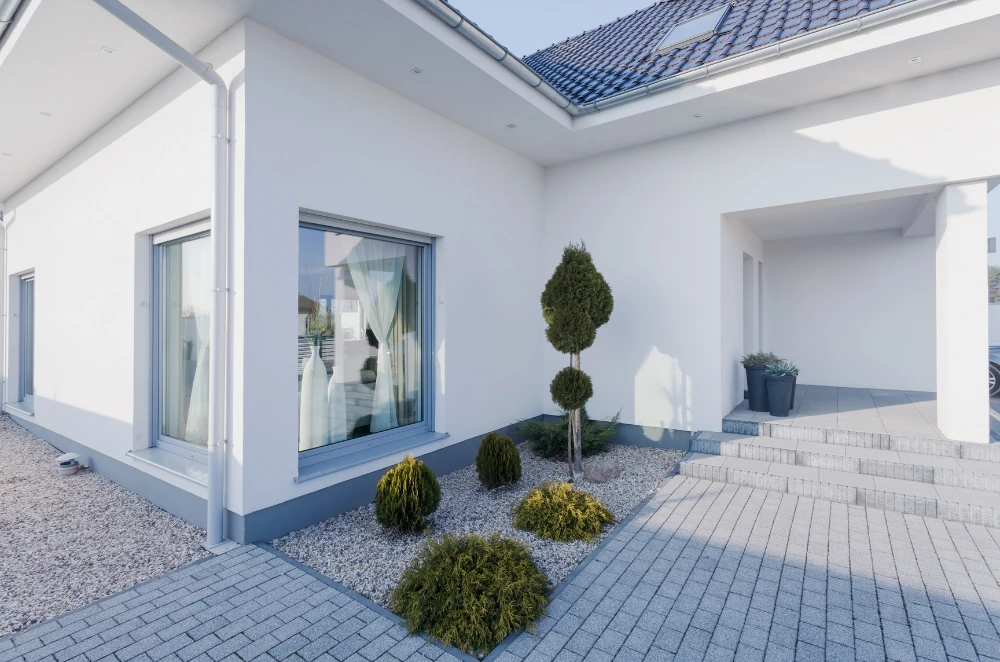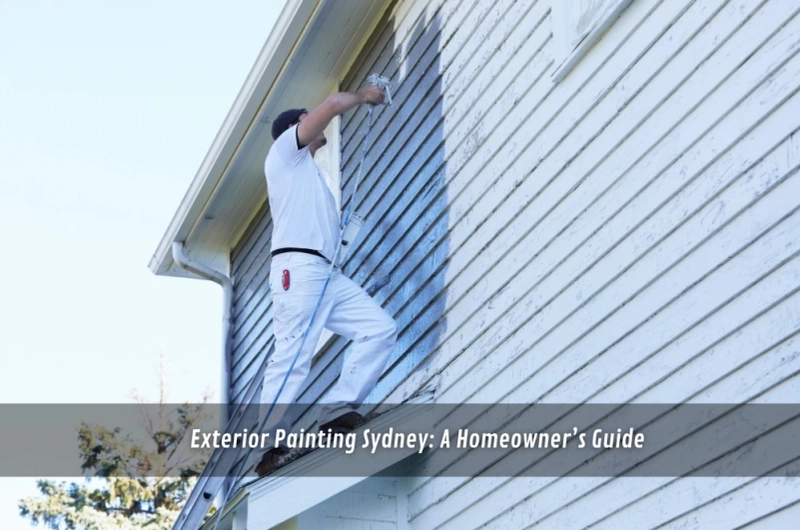Planning a repaint? For exterior wall painting Sydney projects, sequence beats speed: clean thoroughly, fix the substrate, prime smart, then paint within the weather’s limits. Done right, you’ll buy years of durability — not just a fresh colour — and give timber and masonry a fighting chance against Sydney’s sun, salt and sudden downpours.
Why prep matters in Sydney conditions
Paint is only as good as the surface beneath it. Around the Harbour and coast, salt and UV team up to punish coatings; inland, heat and afternoon storms do the rest.
- Wash first: Sugar soap or mild detergent, soft brush, and a gentle rinse remove chalking, dust and salty film so the new coat sticks.
- Scrape and sand: Lift anything loose back to sound edges; feather sand to erase “ridges” where old meets new.
- Treat issues: Spot-prime bare timber, rust-convert metal, and kill mildew with a bleach solution (rinse well).
- Repair, then seal: Fill checks and holes; caulk gaps at trims and junctions so water can’t creep behind the film.
Quick story: I painted a weatherboard in Coogee years ago without a serious wash-down. Looked mint for six months — then the seaside chalk bled through and the sheen went patchy. One afternoon with a brush saved; two weekends lost.
Pick the right paint system for your substrate
Different surfaces, different systems. Don’t force one product to be a hero everywhere.
- Weatherboard/timber: Flexible exterior acrylic topcoats handle movement; use a high-build or tannin-blocking primer on new or stained boards.
- Brick/render: Breathable masonry primers help acrylic topcoats shed water while letting vapour out — key for older walls.
- Metal (gutters, fences): Degrease, abrade, rust-convert where needed; then metal primer and compatible topcoat.
- Previously oil-based: Wash, de-gloss, and use an adhesion primer before switching to water-based acrylics.
Not sure? Prime a small section and do a cross-hatch tape test after curing. If tape lifts paint, your prep or primer choice needs a rethink.
Colour and heritage: Avoid repaint regrets
Sydney’s light is bright and unforgiving; dark colours can run hot and show brushmarks, while ultra-light whites can glare. In heritage streets or conservation areas, there may be guidance (or approvals) around colours and finishes. For local clarity, Heritage Painters in Sydney outlines how to respect period character while repainting.
Practical tips
- Sample boards outside, not under shop lights. Check morning shade and 3 pm sun.
- Balance contrast: light walls with mid-tone trims hide dust and handprints better than pure white.
- Consider heat: very dark tones on full-sun weatherboards can push movement and early checking.
A simple, reliable exterior painting rhythm
Follow a steady sequence and you’ll avoid 90% of headaches:
- Wash & dry: Remove chalk, salts, cobwebs; allow to dry fully.
- Scrape, sand, repair: Back to firm edges; fill and sand smooth.
- Mask & cover: Windows, paths, gardens (drop sheets plus light tie-backs for shrubs).
- Prime properly: Bare timber, metal and patched areas first; full prime coats where needed.
- Cut in & roll: Work one elevation at a time, maintaining a wet edge.
- Recoat to spec: Respect minimum and maximum recoat windows; don’t “day-two” too soon or too late.
- Detail & check: Caulk hairline gaps after primer, then finish coats; remove masking cleanly while the paint is just set.
Weather windows and timing for Sydney
Paint hates extremes. Work with the forecast, not against it.
- Dew point matters: Morning dew on cold surfaces can trap moisture under early coats. Start once the surfaces are dry and warming.
- Avoid the scorch: Direct midday sun flashes acrylics off too fast; chase the shade around the house.
- Rain buffer: Leave the manufacturer’s “rain-safe” period before showers; wind can drive water under fresh paint.
- Seasonal picks: Spring and early autumn usually give kinder temperatures and longer, drier afternoons.
Anecdote: I once “beat” a storm by ten minutes. Looked fine at pack-up — then “snail trails” appeared where wind-driven drizzle hit semi-tacky paint. Redid the whole panel the next day. Lesson learned: add buffer, not bravado.
Details that stop leaks and peels
Most failures start at the edges, not in the big flat areas.
- Flashings & sills: Push primer and paint slightly under edges; water loves gaps.
- End-grain timber: Prime twice — it drinks — or you’ll see early peel at board ends.
- Sealant choice: Use paintable exterior caulk; silicone (non-paintable) will reject your topcoat.
- Fasteners: Spot-prime nail heads and rusty screws; replace where corrosion is advanced.
Safety and access without the drama
- Ladders & footing: Firm, level ground; ladder levellers on slopes; three points of contact.
- Working at height: For multi-storey work, consider a scaffold or a professional crew — safer and faster.
- Lead caution: Pre-’80s coatings can contain lead. If sanding heavily, use wet methods, P2/P3 masks and capture dust; dispose of waste responsibly.
If your place is timber-clad or two-storey, you’ll likely appreciate specialist help. For techniques specific to timber cladding — gaps, expansion, and primer selection — see weatherboard house painters.
How to brief and benchmark a professional quote
Ask for more than “two coats, mate.” A transparent scope should be named:
- Preparation: Washing, scraping, sanding levels; spot vs full prime; repairs included/excluded.
- Products: Brand, line, sheen and colour schedule for each surface.
- Access & protection: How they’ll manage height, gardens, pets and paths.
- Weather plan: Sequencing, buffers and how they handle unavoidable delays.
- Warranty: Labour and manufacturer terms; what maintenance is expected to keep it valid.
Compare quotes on the same scope and elevation schedule, then choose the crew that explains why each choice suits your home and suburb.

Aftercare: Simple habits that extend paint life
A little maintenance keeps the finish crisp and the substrate protected.
- Annual gentle wash: Hose + soft brush = removes salt and grime; prevents chalking.
- Inspect high-risk spots: Sills, board ends, roof-wall junctions; touch up early chips.
- Trim vegetation: Keep branches off walls to stop abrasion and moisture trapping.
- Record colours: Keep a note of brand/colour codes and leftover paint for quick touch-ups.
Building a micro-routine helps: a 30-minute spring wash-down and a post-storm inspection beat big fixes later. For a simple plan to keep finishes fresh, bookmark home paint maintenance.
Final word
Exterior painting isn’t magic; it’s sequence and attention. Clean thoroughly, fix the substrate, prime smart, then paint within the weather’s limits. If time’s tight or heights are tricky, compare your options against exterior wall painting for a realistic benchmark. And if your place sits in a heritage pocket, keep painters in Sydney handy while you plan colours and trims. Do it once, do it right, and enjoy that fresh façade every time you turn into your street.



